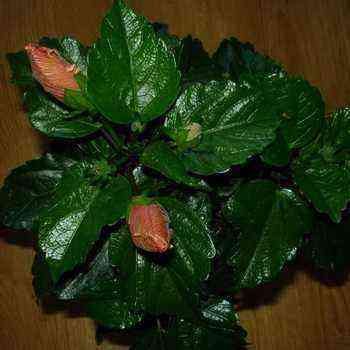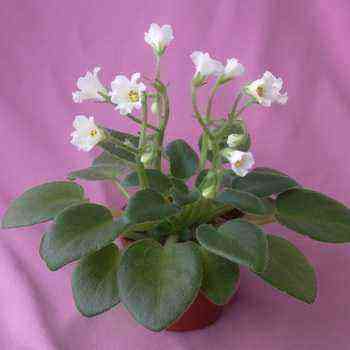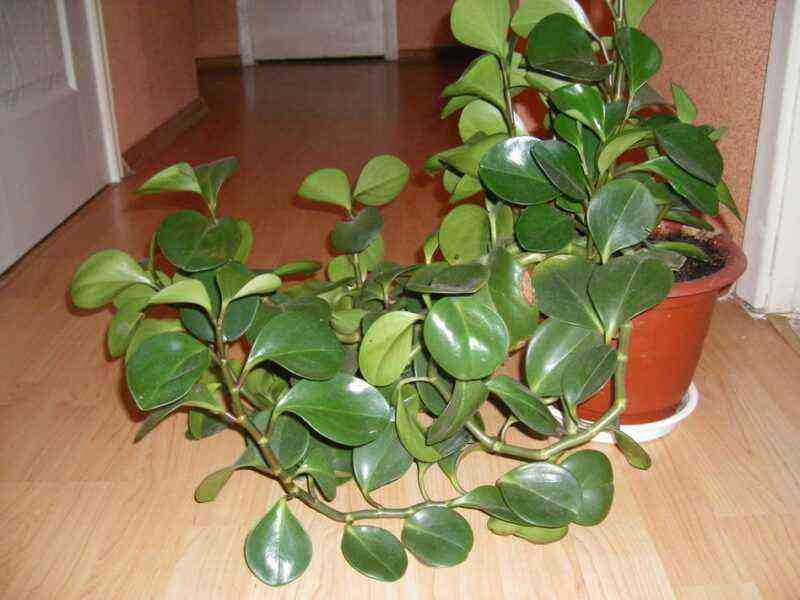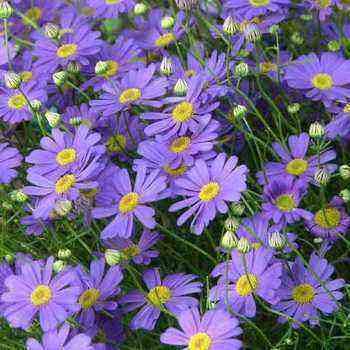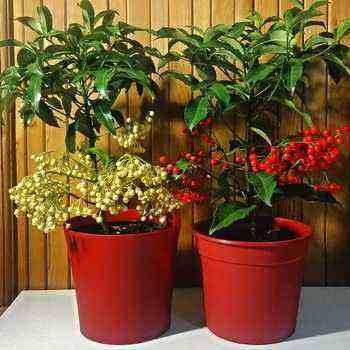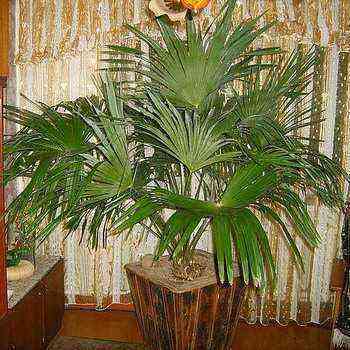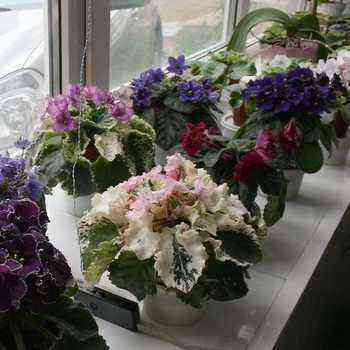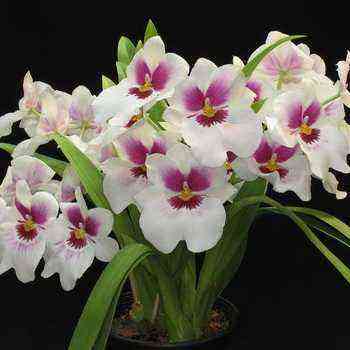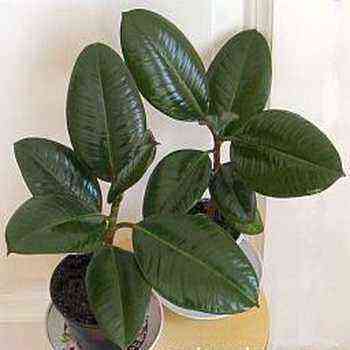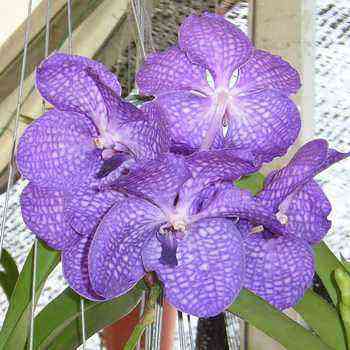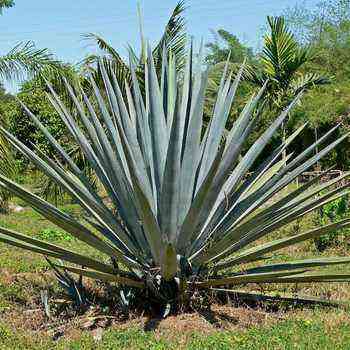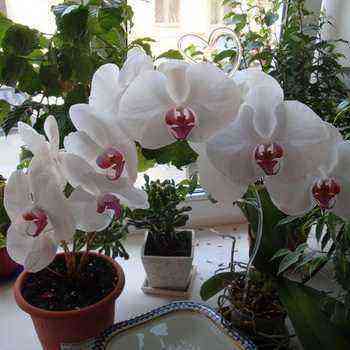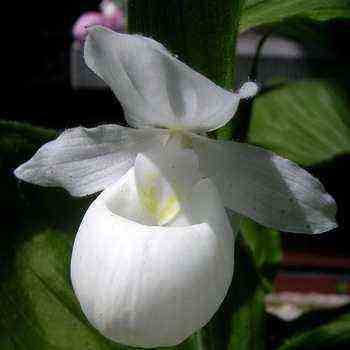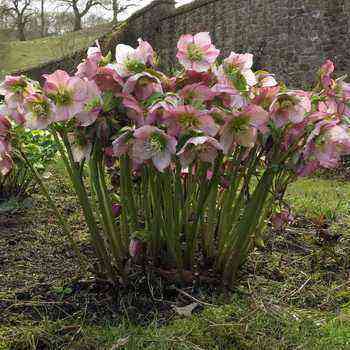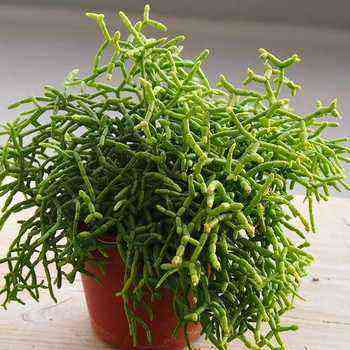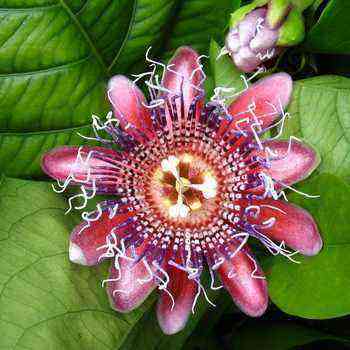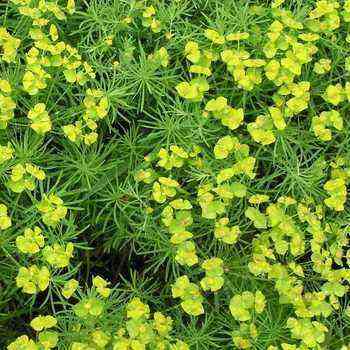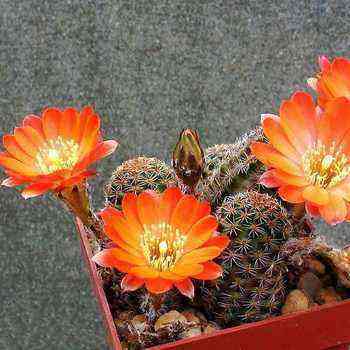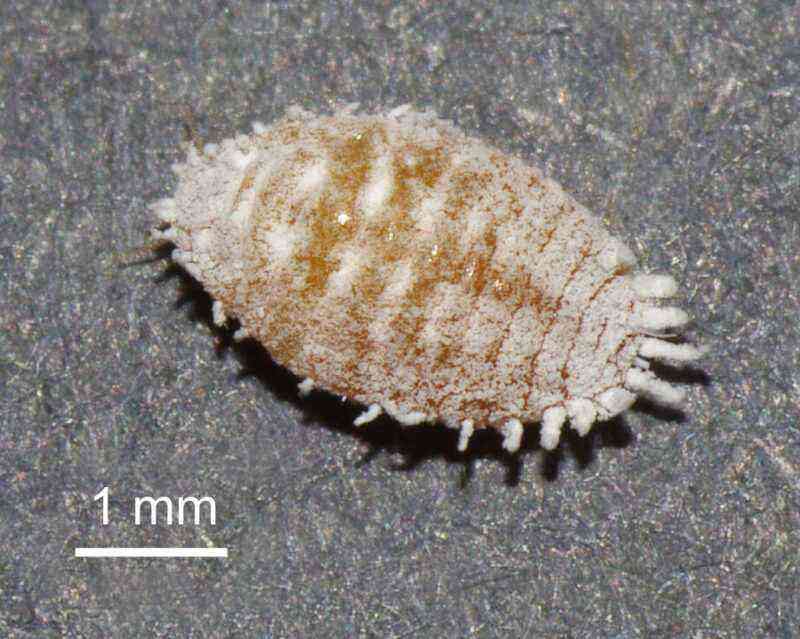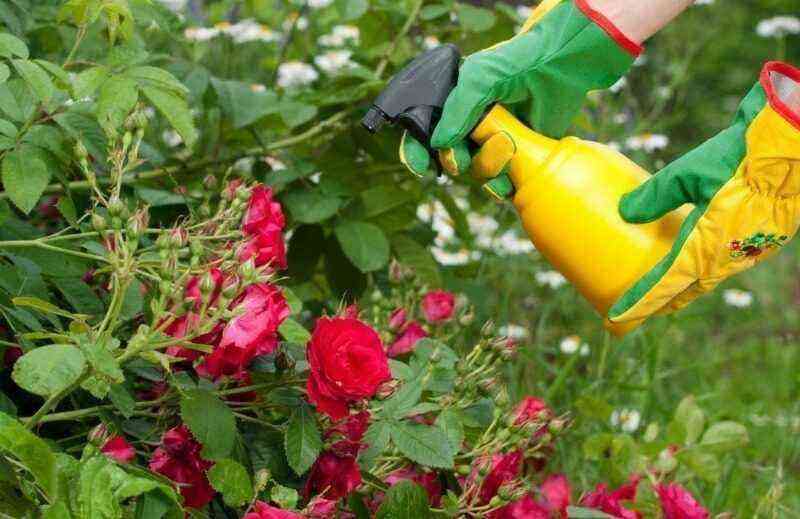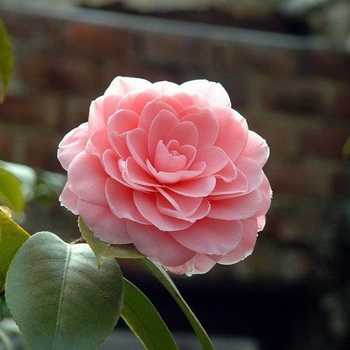 Camellia (Camellia) belongs to the Tea family. Naturally grows in Japan, China, Korea, India, Indonesia, Java and Sumatra. Camellia got its name from the surname of the Moravian naturalist G.I.Kamelius, who first brought this plant to Europe in the second half of the 18th century. It blooms in winter and early spring, depending on the species.
Camellia (Camellia) belongs to the Tea family. Naturally grows in Japan, China, Korea, India, Indonesia, Java and Sumatra. Camellia got its name from the surname of the Moravian naturalist G.I.Kamelius, who first brought this plant to Europe in the second half of the 18th century. It blooms in winter and early spring, depending on the species.
What a camellia flower looks like: photo and description of the shrub
Indoor camellia is a small beautiful evergreen shrub or small tree with leathery, elliptical leaves. In garden conditions, the minimum shrub growth is 1,5 m, and the tree can reach 20 m in height. The branchy stems lignify very quickly, become glabrous and, instead of their green color, acquire a gray or light brown color. The leaves on the shoots grow alternately, one after the other. They are short petiolate and can have an oval or ovoid shape with an elongated end. The surface is smooth, glossy. As you can see in the photo, the leaves of the camellia plant have a rich dark green color and fold slightly along the embossed central vein:
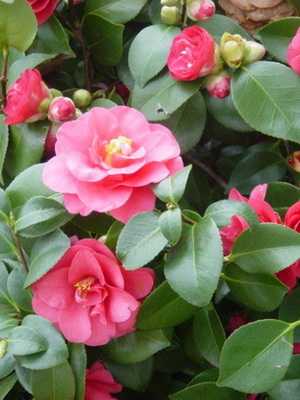

The size of the sheet plate can vary in the range of 3 – 17 cm in length. Light pubescence is observed along the veins.
This plant is quite popular among flower growers, as camellia flowers usually look very attractive, somewhat reminiscent of roses.
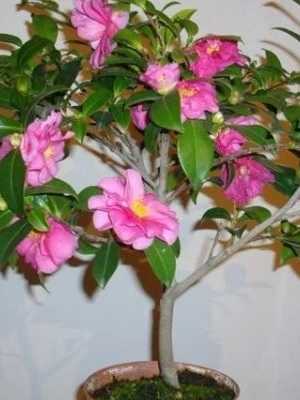
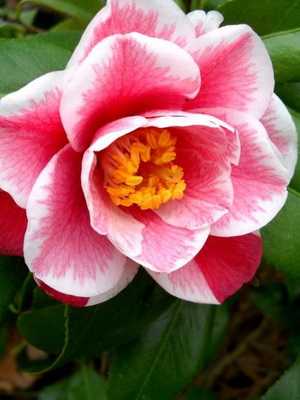
The diameter of the flowers is from miniature (6 cm) to large (up to 12-14 cm), red, white or pink, with 5-7 petals. Camellias are found with double and variegated flowers. However, they stay on the bush for no longer than one month. Most varieties have no smell. The bases of the petals are folded into a tube. They can be arranged in 1 or in several tiers, forming a lush bud. Each individual petal has a round or wide oval shape with a wavy edge. In the description of the flowering of camellias, a large number of yellow stamens are also distinguished, which are located in the center of each flower. In most, the color of the petals is monochromatic, but variegated varieties have also been bred.
You can see in the photo that the camellia looks like an ordinary bush after the petals fall:
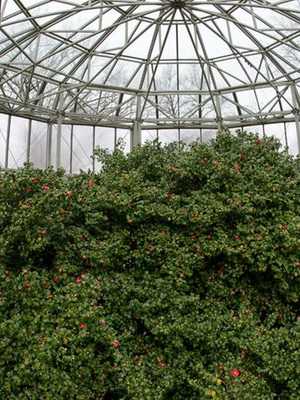
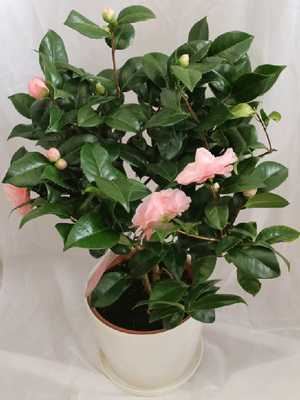
However, in their place, fruits are formed – dry seed pods, divided into 5 compartments. The seeds that are in them lose their germination rather quickly, since they contain peculiar oils in their structure.
Variety of species and varieties of camellia flower: photo and description of plants
Types of such a flower as camellia have a fairly wide variety and differ from each other not only in the color of the inflorescences, but also in size and shape.
Popular types:

Japanese camellia (C. japonica);

Mountain camellia (C. sasanqua) – grows slowly, blooms in late winter – early spring;
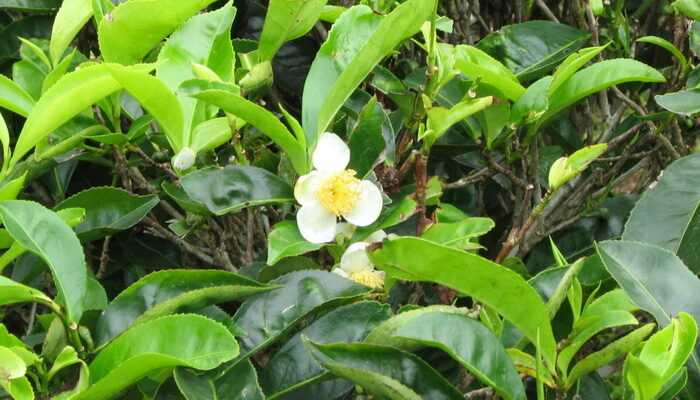
Chinese camellia (C. sinensis).
Many terry varieties have been developed.
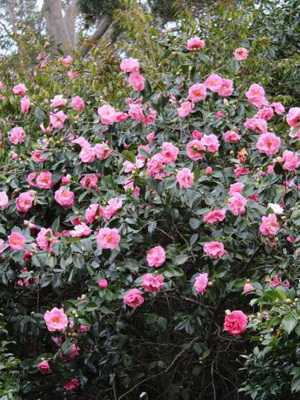
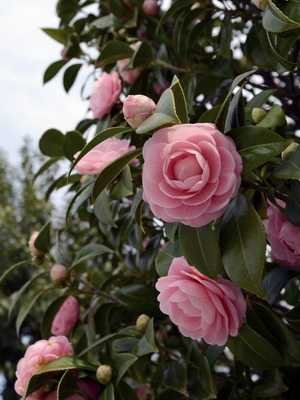
Japanese camellia (C. japonica)… This type of camellia plant is considered the most decorative among the rest and is appreciated by flower growers because of its very beautiful flowers. It is an evergreen shrub that blooms profusely. Its dark green leaves are covered with thin skin.
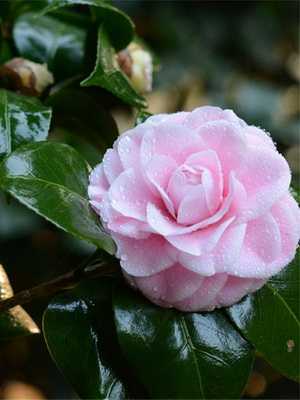

You can see from the photo that this type of camellia blooms in the winter, which especially highlights the bright buds against the background of snow. In indoor conditions, the plant grows up to 1 m in height. Its flowers are double, with various colors.


Camellia “Guilio Nuccio”. This is a variety of Japanese camellia, which has a rich crimson-pink color of flowers and is not very large in size. The oval petals are folded in two rows.
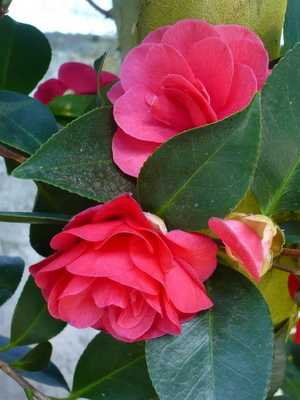
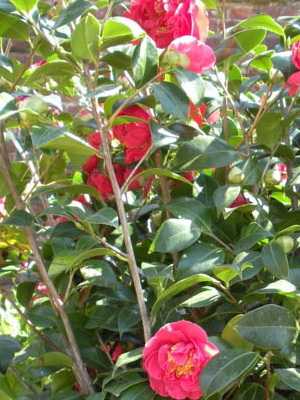
Camellia “Lady Campbell”. This variety is highly prized for its high hardiness. It can tolerate a short drop in temperature to -20 ° C without consequences. Because of this, it is ideal both as a houseplant and as a garden plant. The size of this shrub can reach no more than 2 m in height. It branches very strongly and forms a rather wide and lush plant. Peony-like flowers can be up to 10 cm in diameter.

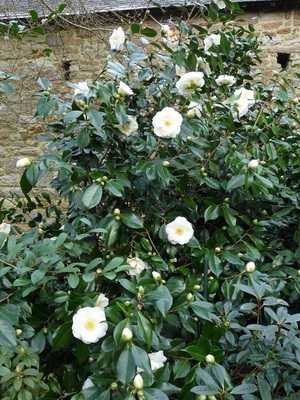
Camellia “Japonica Nobilissima”. Quite a tall bush, which in its natural environment can reach 2 m in height. In indoor conditions, the plant, of course, is much lower. This variety blooms during the period from December to January. The flowers of a snow-white color stand out very favorably against the dark green background of the leaves.
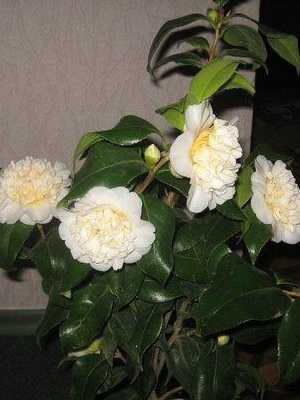

Camellia “Brushfield Yellow”. You can see in the photo that this variety of camellia is distinguished by unusual flowers with a double color – the core of a creamy color is surrounded by snow-white petals. This shrub is relatively small in size – it never grows above 1,5 m.
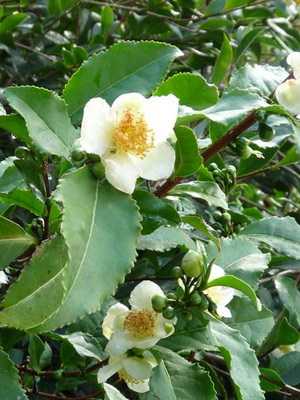

Camellia chinese (C. sinensis)… As you can see from the photo, the description of this camellia differs in many ways from the previous species – it is a tree-like plant, sometimes of small size, which, however, can reach 20 m in height. As you know, this representative is the very Chinese tea tree. Since ancient times, this species was used exclusively for practical purposes – special medicinal tea was prepared from its leaves. However, now more gardeners are paying attention to the lush flowering of the tree. Large inflorescences of white or yellowish color have a slightly visible reticular surface. The leaves of this species can reach a size of up to 14 cm in length and 4 cm in width.


Mountain camellia (S. sasanqua)… This camellia as a houseplant is quite small and looks good indoors. This species has branched, pounded shoots covered with smooth green or brown bark. The edges of the leaves are serrated, and their surface is slightly pubescent along the central vein. The plant can form small inflorescences with 3 buds, or it can produce single flowers. The color of flowers can be varied – from red and pink to white. Several decorative varieties have been bred from this species, which are especially resistant to low air temperatures. They thrive best in cool rooms.
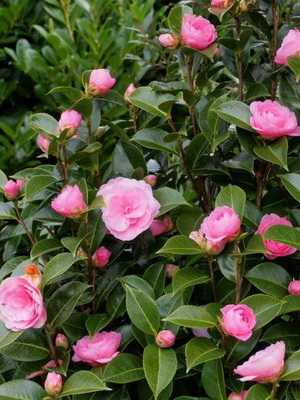
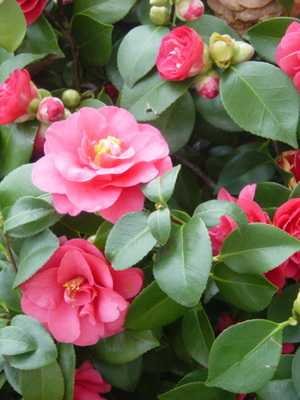
Camellia hybrid Williams (Camellia x williamsii)… This plant is especially popular in Europe. This is due to the ease of cultivation and the tolerance of the bush to the climatic conditions of temperate latitudes. A distinctive feature of this camellia is that after the flowers wither, it completely sheds the buds.
Optimal home growing conditions for camellia and plant care videos
Growing camellia at home requires not only care, but also providing the plant with optimal environmental conditions.

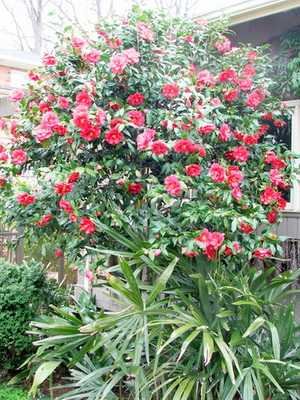
Camellia is a light-loving plant, but direct sunlight is highly undesirable. The flower will feel best on the eastern or western windowsill. If you place the camellia near the north window, or in the back of the room, it will suffer from a lack of lighting. If the pot with this plant is placed on the windowsill on the south side of the house, then in a sunny time of the day it is necessary to take care of the shading of the flower. In order for the crown of the shrub to grow evenly and not stretch in one direction, you can turn the pot from time to time. However, during the formation of flowering, changing the position of the pot is highly discouraged. In response to stressful influences, the plant can shed its buds. As you can see in the video, caring for a camellia in the warm season does not require a lot of energy and the flower can be taken out into the fresh air:
However, it is important to keep an eye out for drafts and direct sunlight. This plant will thrive on 12 hours of daylight. In the winter season, when natural light does not last so long, it is necessary to place fluorescent lamps near the flower.
In winter, the room temperature should be no higher than 10-12 ° C. Drafts and sudden temperature fluctuations should be avoided. When buds appear, the temperature should be increased to 16 -17 ᵒС. The flower feels best at 18 – 20 ᵒС. In a too warm room, the camellia will begin to shed buds. Also, flowering may begin earlier than usual, and the quality of flowers will deteriorate sharply. The flower does not like musty air, so the room needs to be ventilated from time to time. In this case, the plant should not be allowed to remain in a draft.
Loose, moisture-permeable soil is best. The substrate is leaf, turf and coniferous soil, peat, sand (2: 2: 2: 1: 1). The soil must be acidic.
The plant is suitable for cool, light rooms, winter gardens.
How to grow a lush camellia bush at home
Many novice flower growers do not know how to properly care for a home camellia, and make mistakes that can lead to the death of the flower. However, in order for the plant to live long and bloom well, you need to adhere to just a few simple tips.
The amount of watering depends on the air temperature – the hotter, the more water the flower needs. Each time between humidifications, the upper part of the earthen coma 1 – 2 cm deep should have time to completely dry out. However, the soil must not be allowed to dry completely, as this will harm the plant, and it will begin to shed its leaves. Waterlogging is also extremely undesirable – in this case, the substrate will sour and the flowers will fall off, and the leaves will be covered with brown spots. Watering with water at room temperature is recommended. The water must be free of lime. In July – August, watering is reduced. In winter, watering is moderate.
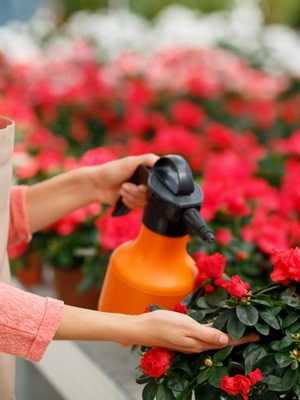
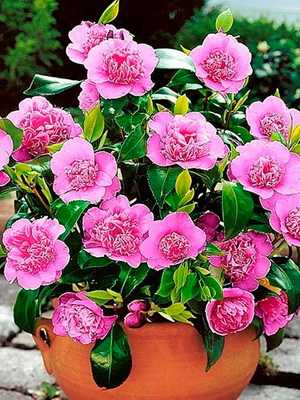
When growing and caring for a camellia bush, it is important to provide it with a sufficient level of moisture, since it is extremely difficult to endure arid conditions. To do this, you must regularly spray the flower. It is best to do this with a low light intensity, as otherwise burns may appear on the leaves. For this purpose, settled water at room temperature is used. If the camellia is blooming, it is important to ensure that no water droplets fall on the flowers during spraying, as this will lead to their rapid wilting. You can also increase the humidity around the plant by placing the pot on a pallet with wet pebbles.
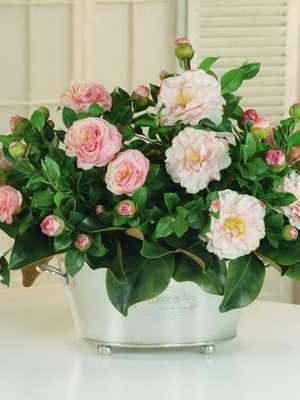
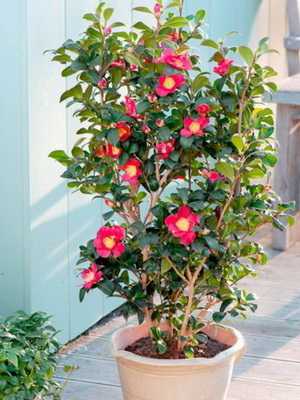
Caring for a camellia flower both at home and in the garden involves regular feeding in order to provide the plant with all the necessary nutrients. With the beginning of growth, mineral fertilizers are applied without admixture of lime. They need to be diluted at the rate of 1 gram of fertilizer per 1 liter of water. With the appearance of buds, feeding should be stopped.
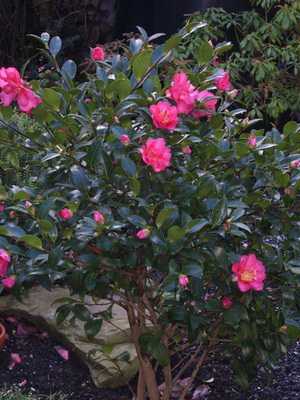

In order to grow a lush camellia bush at home, it, like all indoor plants, must be repotted periodically. Given that with the arrival of spring, most camellia varieties are still in full bloom, transplanting is usually carried out at the beginning of winter. This should be done every 2 to 3 years for mature plants and every year for young plants. The pot must be chosen a few centimeters larger than the previous one. The root system of this plant is very fragile and it is very easy to damage it during transplantation. Therefore, they do not completely get rid of the old earthen coma, since after this the flower will still hurt for a very long time. The best option would be to get rid of only a small part of the old soil and simply transfer the plant to a new pot. At the bottom, it is imperative to put a thick layer of drainage, which will not allow excess moisture to stagnate in the ground. For this, expanded clay or broken brick is used. After the transfer, the empty space remaining between the walls and the old earthen lump is covered with fresh substrate. The root collar of the plant must be placed on the soil surface. Care after planting camellia is slightly different from usual – at first it is necessary to water the plant rather rarely and very carefully.
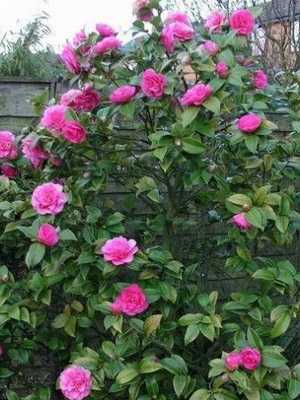
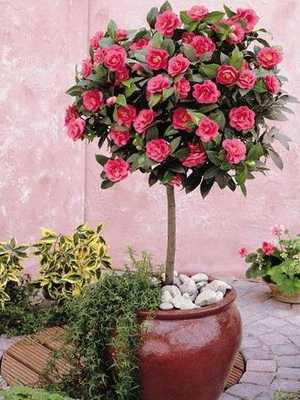
Theoretically, this plant does not need pruning, but this procedure can be carried out in order to give the flower a decorative effect. If you want to get a profusely flowering bush with a large crown, you can trim the shoots a little, which will then branch out much better. It is necessary to carry out this procedure after the flowering of the camellia. In the event that there are too many flowers on the bush, the plant can get sick, since it takes a lot of effort to form them. In this case, it is better to cut off the extra buds, leaving about 3 flowers on one shoot.
If the pot is constantly moved, the plant may shed its buds.
Reproduction of a camellia flower: how to root cuttings
Reproduction of a flower such as camellia is carried out using seeds and apical cuttings, which are easily rooted. Seeds are rarely used.
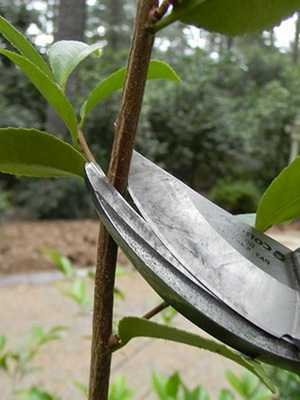
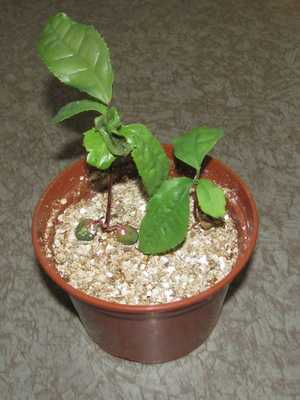
Reproduction of camellia using cuttings can be carried out in the summer season – July-June, as well as in the winter, but it is worth remembering that in this case, the development of the plant will last a little longer. To obtain cuttings, it is necessary to cut off several shoots from the apical branches. Stems that have already formed a bark work best, but green stems can also be used. In order to root the camellia, you need to place the cuttings in pots with sandy-peat soil or perlite as soon as possible. After that, the shoots are covered with a plastic bag or jar to help maintain high humidity. Place the containers in a bright room with a temperature of 20 – 25 ° C. From time to time it is necessary to ventilate the cuttings by spraying and watering them at the same time. In order for the root system to have time to fully form, 1,5 – 2 months must pass. After that, you can remove the shelter from the plant.
Growing camellia: how to plant seeds correctly to grow a beautiful bush
To grow a beautiful camellia bush with the help of seeds, you need to carefully select the type of plant as possible, since such reproduction will ensure the successful production of decorative specimens of far from all varieties.
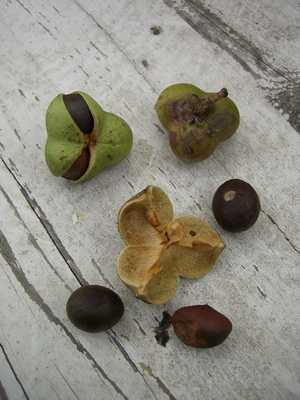
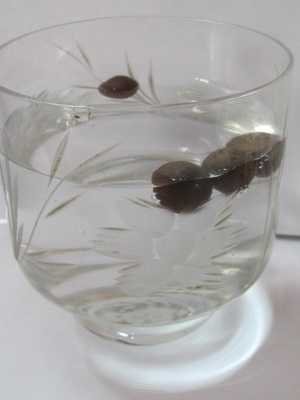
Planting camellia seeds is necessary as soon as they are fully ripe and suitable for sowing. To do this, place them in disposable cups with loose garden soil and cover with glass or plastic. Place the containers in a well-lit place with a temperature of 20 – 23 ° C. The substrate is constantly sprayed with settled water. It will be correct to plant the camellia in a new pot after 2 full leaves have appeared on the plant.
At home, growing camellia using seeds is not recommended, since this method is usually used exclusively for breeding purposes.
Treatment of camellia diseases and how to get rid of pests (with photo)
As you know, camellia diseases are most often caused by mistakes in care, and each symptom can indicate what exactly the plant lacks.
If the flower begins to fade, the leaves become covered with brown spots, and the buds fall off, then most likely the reason for this is decay of the root system. It can also be detected during transplantation. The roots begin to rot when the soil is waterlogged, when the moisture turns sour. Excessive watering can produce a particularly detrimental effect at low air temperatures.
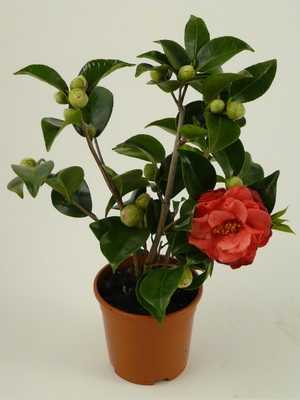
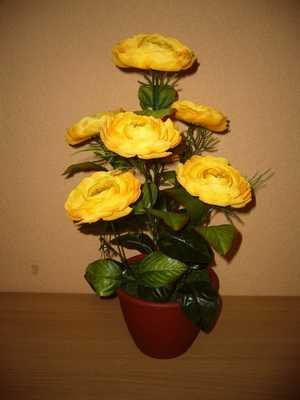
As you can see in the photo, for the treatment of this camellia disease, the plant must be transplanted into new soil as soon as possible, which allows air and moisture to pass through well, while removing all damaged areas. After transplanting, you need to leave the flower alone for a few days. It is not necessary to water it this time – you can get by with a simple sprinkling of the leaves. Many inexperienced flower growers try to save rotting camellia by reducing watering, but it is worth warning right away that this method works quite rarely, and only if the damage is still very weak.
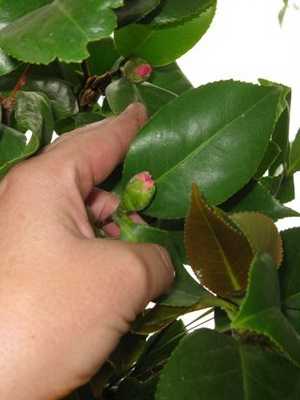
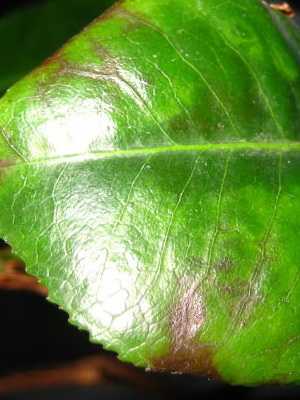
If the plant mostly feels good, but at the same time brown spots began to appear on the leaves, then the fastest camellia received sunburn. In this case, you need to take care of shading the flower from direct sunlight. Also, burns can appear when spraying foliage at lunchtime.
At the same time, brown spots indicate the appearance of a disease such as phyllostictosis. It appears if the humidity in the room with camellia is too high. In order to get rid of this disease, it is necessary to treat the foliage with copper sulfate. The damaged areas of the plant are removed. After that, it is important to take care of the restoration of a normal indoor climate.
It happens that the camellia suddenly begins to shed its leaves. This can happen as a result of prolonged drying out of the earthen coma. You can fix this by gently resuming proper watering.
If grayish spots appear on the plant, then most likely the reason for this is a disease such as powdery mildew. You can get rid of it by using sulfur or fungicidal preparations.


If symptoms such as black and gray spots on the leaves and brownish spots on the petals appear at the same time, followed by the fall of flowers, then the problem lies in the appearance of some fungal diseases. In order to heal the flower, you can use funginicides, but this will only help with a low degree of damage. Otherwise, it is better to discard the flower, since the disease can migrate to other plants.
Due to the dry air in the room or frequent movement, the camellia sheds its buds.
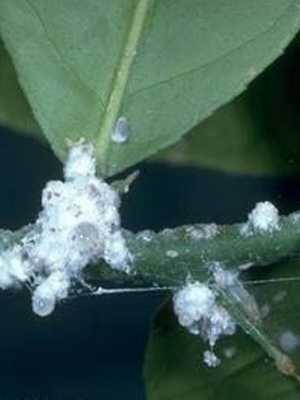
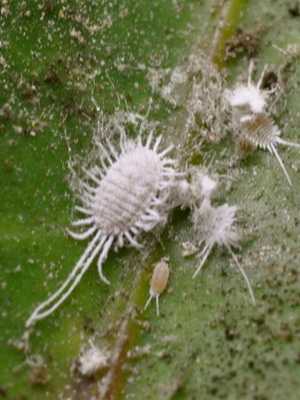
Many camellia diseases are caused by pests that can usually be detected even with the naked eye. For example, if a white bloom appears on the stems and leaves of a flower, then this is a mealybug. Large areas of white accumulations that are clearly visible should be wiped with a cloth dampened with soapy water. Hard-to-reach ones can be reached with alcohol-soaked gauze wrapped around a stick. In case of severe damage, the flower must be treated with karbofos several times.

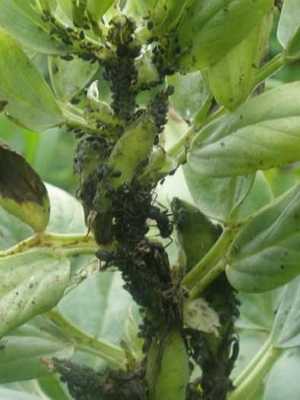
One of the common pests found on the camellia is aphids, due to which the leaves of the plant curl and become covered with yellow spots. For treatment, it is necessary to treat the bush with special aerosols. However, they only kill adult insects, so the procedure must be repeated several times every 2 to 3 days.
In dry air conditions, a spider mite can settle on a flower. It is easy to find it – with the help of clusters of white cobwebs on leaves and shoots. The bright red mite itself is also a very noticeable insect. To get rid of this pest, you can treat the plant with oil emulsions, or chemical aerosols.
